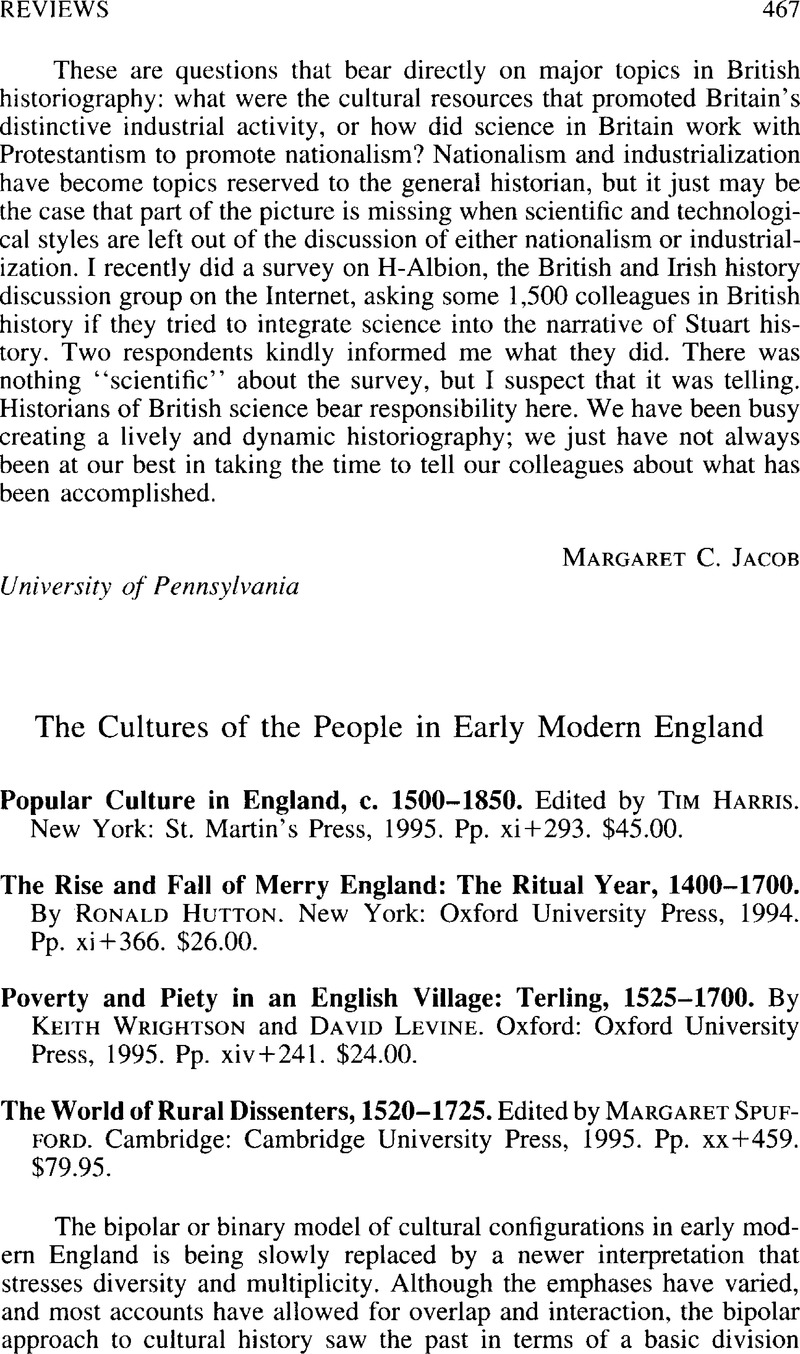No CrossRef data available.
Article contents
The Cultures of the People in Early Modern England - Popular Culture in England, c. 1500–1850. Edited by Tim Harris. New York: St. Martin's Press, 1995. Pp. xi+293. $45.00. - The Rise and Fall of Merry England: The Ritual Year, 1400–1700. By Ronald Hutton. New York: Oxford University Press, 1994. Pp. xi+366. $26.00. - Poverty and Piety in an English Village: Terling, 1525–1700. By Keith Wrightson and David Levine. Oxford: Oxford University Press, 1995. Pp. xiv+241. $24.00. - The World of Rural Dissenters, 1520–1725. Edited by Margaret Spufford. Cambridge: Cambridge University Press, 1995. Pp. xx+459. $79.95.
Published online by Cambridge University Press: 10 January 2014
Abstract

- Type
- Reviews
- Information
- Copyright
- Copyright © North American Conference of British Studies 1997
References
1 Burke, Peter, Popular Culture in Early Modern Europe (1978; reprint, London. 1994)Google Scholar; Muchembled, Robert, Culture populaire et culture des élites dans la France moderne (Paris, 1978)Google Scholar, published in English as Popular Culture and Elite Culture in France, 1400–1750 (Baton Rouge, La., 1985)Google Scholar.
2 Chartier, Roger, The Cultural Uses of Print in Early Modern France (Princeton, N.J., 1987), pp. 3–5Google Scholar. See also the stimulating essay by Scribner, Robert, “Is a History of Popular Culture Possible?” History of European Ideas 10 (1989): 175–91CrossRefGoogle Scholar.
3 Hutton, Ronald, “The English Reformation and the Evidence of Folklore,” Past and Present, no. 148 (1995): 113Google Scholar.
4 The literature on this is now quite extensive. For a case study that refers to the historiography, see von Friedeburg, Robert, “Reformation of Manners and the Social Composition of Offenders in an East Anglian Cloth Village: Earls Colne, Essex, 1531–1642,” Journal of British Studies 29 (1990): 347–85CrossRefGoogle Scholar. Wrightson's postscript also refers to those who have engaged with the argument.
5 Spufford has attracted some talented graduate students, two of whom have already produced monographs of considerable importance. See Marsh, Christopher W., The Family of Love in English Society, 1550–1630 (Cambridge, 1994)Google Scholar; and Watt, Tessa, Cheap Print and Popular Piety, 1550–1640 (Cambridge, 1991)Google Scholar.
6 Compare Reay, Barry, ed., Popular Culture in Seventeenth-Century England (1985; reprint, London, 1988), with the book by Tim Harris reviewed hereGoogle Scholar.




